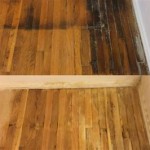Can You Lay Ceramic Tile Over Linoleum Flooring? A Comprehensive Guide
The question of whether ceramic tile can be installed directly over existing linoleum flooring is a common one in home renovation. While it might seem like a shortcut to avoid the labor and expense of removal, the feasibility and long-term success of this approach depend on several critical factors. Directly tiling over linoleum can present both potential benefits and significant risks. A thorough understanding of these considerations is essential before proceeding with such a project.
This article will explore the advantages and disadvantages of laying ceramic tile over linoleum, outline the necessary steps for a successful installation (if deemed appropriate), and discuss alternative solutions to ensure a durable and aesthetically pleasing finished floor.
Evaluating the Condition of the Linoleum
Before even considering tiling over linoleum, a meticulous assessment of its existing condition is paramount. This assessment is not simply a visual inspection; it requires a hands-on approach to identify potential weaknesses and vulnerabilities that could compromise the integrity of the new tile installation. The linoleum's stability, adhesion, and overall structure must be thoroughly evaluated.
First and foremost, the linoleum must be securely bonded to the subfloor. Any loose areas, bubbling, or peeling indicate a failure in the adhesive bond. Attempting to tile over areas with poor adhesion will likely result in the new tile layer also becoming unstable and prone to cracking or detachment. These loose areas must be addressed – ideally by removing and repairing the underlying subfloor – before any further steps are taken.
The linoleum should also be relatively flat and free of significant imperfections. Dips, gouges, or uneven surfaces will translate through the tile, creating an unsightly and potentially unsafe finished floor. Small imperfections can sometimes be addressed with self-leveling compounds, but larger irregularities may necessitate linoleum removal.
Additionally, the type of linoleum used should be considered. Older linoleum, particularly that containing asbestos (common in homes built before the 1980s), presents significant health hazards if disturbed. In such cases, professional asbestos abatement is legally mandated before any flooring work can proceed. Disturbing asbestos-containing linoleum releases microscopic fibers into the air, which can cause serious respiratory illnesses. Testing the linoleum for asbestos is crucial before attempting any alteration or removal.
Finally, consider the overall thickness and flexibility of the linoleum. A soft, flexible linoleum layer can allow too much movement under the tile, leading to cracking and grout failure. Ideally, the linoleum should be relatively rigid and provide a stable base for the tile.
Preparing the Linoleum Surface for Tile
If the linoleum passes the initial assessment and is deemed suitable for tiling over, proper surface preparation is crucial. This process ensures a strong bond between the linoleum and the thin-set mortar used to adhere the tile. Without adequate preparation, the tile installation is likely to fail over time.
The first step is a thorough cleaning. The linoleum surface should be scrubbed with a strong detergent and water to remove all dirt, grease, wax, and other contaminants. These substances can interfere with the bond between the linoleum and the thin-set mortar. Rinse the surface thoroughly with clean water and allow it to dry completely.
Once the surface is clean and dry, it needs to be roughened to provide a better grip for the thin-set mortar. This can be achieved by sanding the linoleum with coarse-grit sandpaper (typically 60-80 grit). The goal is not to remove the linoleum entirely but to create a slightly textured surface that the mortar can adhere to. After sanding, vacuum the surface thoroughly to remove all dust and debris.
Applying a bonding primer is another critical step. A bonding primer is a liquid adhesive that increases the adhesion between the linoleum and the thin-set mortar. Choose a primer specifically designed for use on non-porous surfaces like linoleum. Apply the primer according to the manufacturer's instructions and allow it to dry completely before proceeding.
Some professionals recommend applying a self-leveling compound to the linoleum surface after cleaning and sanding, especially if there are minor imperfections or unevenness. This creates a perfectly flat and level surface for the tile installation. However, using a self-leveling compound adds to the project's complexity and cost.
Proper preparation is not a step to be skimped on. It is the foundation for a successful tile installation over linoleum, and neglecting it can lead to costly repairs and replacements down the line.
Potential Problems and Alternative Solutions
Even with careful evaluation and meticulous preparation, tiling over linoleum carries inherent risks. The primary concern is the potential for the linoleum to detach from the subfloor, leading to cracking or detachment of the tile. The added weight of the tile can exacerbate existing weaknesses in the linoleum's adhesion.
Another potential problem is moisture. If moisture penetrates the grout and tile, it can become trapped between the tile and the linoleum. This can lead to mold growth, deterioration of the linoleum, and eventual failure of the tile installation. Using a high-quality grout sealer and ensuring proper ventilation in the room can help mitigate this risk.
Height is another consideration. Adding tile and thin-set mortar on top of existing linoleum will raise the floor level. This can create tripping hazards at doorways or affect the operation of doors and appliances. It's essential to consider these height implications before proceeding.
Given these potential problems, removing the linoleum entirely is often the best course of action. While it may require more time and effort, removing the linoleum provides a clean, stable, and level subfloor for the tile installation. This eliminates the risk of the linoleum detaching and ensures a longer-lasting and more durable finished floor.
If removing the linoleum isn't feasible due to asbestos concerns or other factors, consider alternative flooring options. Luxury vinyl tile (LVT) or laminate flooring can often be installed directly over linoleum without the same risks associated with ceramic tile. These materials are lighter, more flexible, and less prone to cracking than ceramic tile. They also require less extensive preparation, making them a more practical choice in some situations.
Ultimately, the decision of whether to tile over linoleum depends on a careful assessment of the existing conditions, a thorough understanding of the potential risks, and a comparison of alternative solutions. Consulting with a qualified flooring professional is highly recommended to ensure that the chosen approach is appropriate for the specific situation and will result in a durable and aesthetically pleasing finished floor.
When considering tiling over linoleum, remember that shortcuts in home renovation often lead to greater expense and frustration in the long run. Investing the time and effort to properly prepare the surface or explore alternative solutions is likely to yield a more satisfactory and lasting result.
The initial cost savings of tiling over linoleum might be tempting, but the potential for future repairs and the risks associated with the underlying linoleum should be carefully weighed. A thorough evaluation and a well-informed decision are crucial for a successful flooring project.
Finally, always prioritize safety and adhere to all applicable building codes and regulations. Especially when dealing with older homes, unexpected issues may arise, and it is always best to proceed with caution and seek professional advice when needed.

Can You Lay Tile Over Linoleum Rubi Blog Usa

How To Tile Over Linoleum Floors Correctly

What To Do Before Tiling Over Vinyl Or Lino Stonesuper

How To Lay Tile Over An Existing Vinyl Floor Today S Homeowner

Handy How To Guide For Installing L Stick Tile Over Linoleum

Can You Tile Over Linoleum Flooring Maria Louise Design

Handy How To Guide For Installing L Stick Tile Over Linoleum

Can You Tile Over Linoleum Flooring Maria Louise Design

Can You Tile Over Linoleum Flooring Maria Louise Design

What To Do Before Tiling Over Vinyl Or Lino Stonesuper
Related Posts








